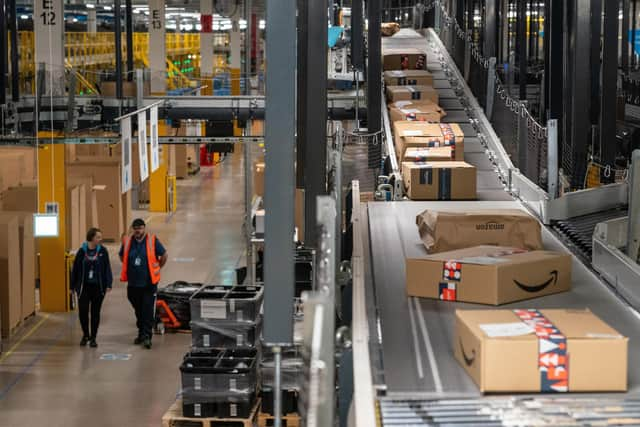What Amazon's success can teach businesses about maintaining momentum: Bird Lovegod
It is really hard to generate. Imagine pushing a rock up a hill, Sisyphean style, and actually having to keep the rock moving forward even when you stop pushing. That’s the hurt of it.
Strategically, sometimes it’s impossible. Unless a business has true product market fit, there will be no momentum, at least not the good kind. Because it works both ways.
Advertisement
Hide AdAdvertisement
Hide AdThe rate at which the company fails can also gather momentum, the bank account running down like the sands of time left before dust again.


In new startups it’s even more difficult to generate because absolutely nothing happens without someone doing something, and by someone I mean the founders.
The phone doesn’t ring, the emails stay silent, the shop stands empty.
You can’t buy momentum, although you can buy the appearance of it by throwing money at marketing and PR and promotions and social media.
Advertisement
Hide AdAdvertisement
Hide AdBut it’s not momentum unless it carries on when you stop pushing. The most effective way to gain momentum is to be embedded within a system that itself has an expansive growth.


PayPal gained huge momentum in the early days by becoming enmeshed within eBay. As eBay grew, PayPal grew.
Google gained vast momentum, and still has it, by being enmeshed within the actual internet itself. Anything that grew the internet by default also grew Google.
There can be a formula, if everything else is right, or close to right. And then it can be applied to massive effect and impact.
Advertisement
Hide AdAdvertisement
Hide AdAmazon identified a flywheel effect, a momentum engine, centered around pricing and customer experience. The lower the pricing, the better customer experience, the better the customer experience, the more traffic to the site, the more traffic to the site, the more sellers want to sell, the more sellers want to sell, the greater the choice, the greater the choice, the better the customer experience.
It’s a virtuous cycle, and Amazon discovered that increasing any of the components accelerated all of the wheel. Therefore momentum could be increased by subsidising prices, or by increasing sellers, or by improving customer experience, or by increasing traffic.
In such a system, feeding any part of it feeds the whole. The key thing was understanding the components of the system as being separate yet interlocked and understanding the fundamental relationship between them. Like gears in a machine.
This simple understanding unlocked the ultimate understanding of how to achieve almost unlimited growth and momentum. And that’s how Amazon did it, and does it.
Advertisement
Hide AdAdvertisement
Hide AdSo, for any business, there is the key question. What is our flywheel made from? What are the gears that drive it? And how can we structure the businesses, and our understanding of the business, around these gears? Hence Amazon is dedicated to customer satisfaction, obsessed with being the lowest priced, and has successfully become the ‘everything store’ it set out to be.
Interestingly, and tellingly, you can also see what is NOT part of the flywheel machine. Employees don’t feature on it, even though Amazon has over 1.5 million of them, full and part time.
But for some companies the employees may be a vital gear, and the better they are treated, the better the entire machine works. It’s an insightful way to understand a company.
Comment Guidelines
National World encourages reader discussion on our stories. User feedback, insights and back-and-forth exchanges add a rich layer of context to reporting. Please review our Community Guidelines before commenting.